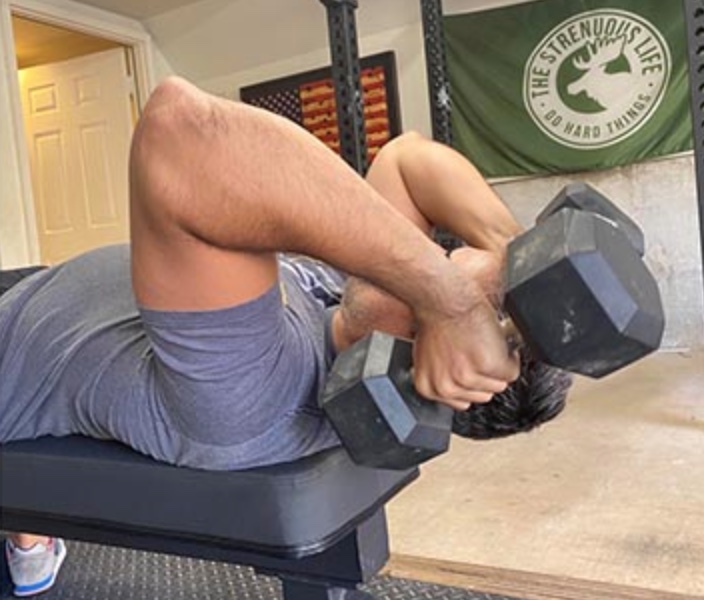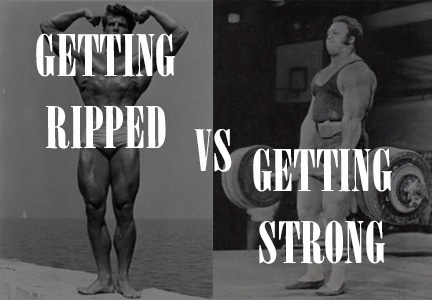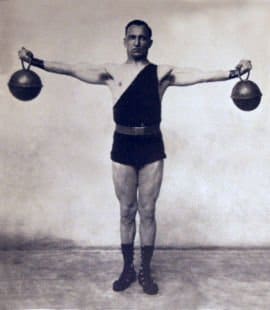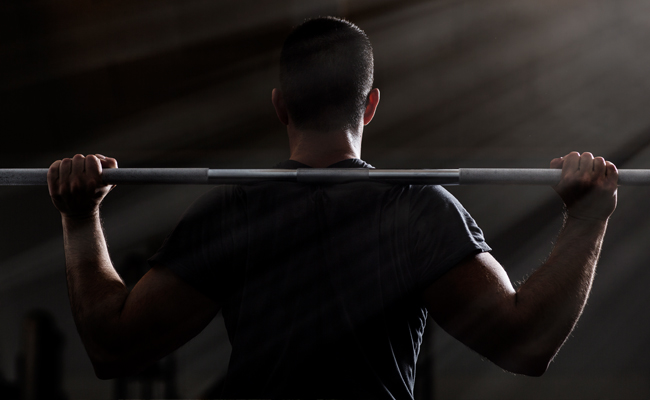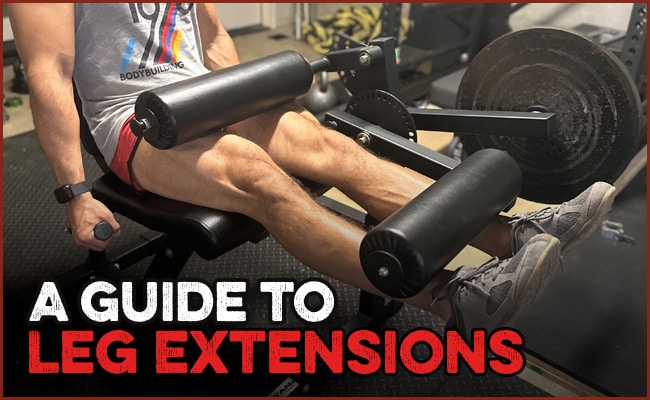
Last month, I talked about how I’ve reincorporated weight machines into my strength-training workouts to good effect.
This year, we’ll be doing some articles on how to use various weight machines properly. One of the benefits of using machines is that they have a much easier learning curve than lifting barbells. But there are a few things you should know about using each in order to avoid pain and injury and use them most effectively for building size and strength.
First up in these tutorials is the leg extension machine, which targets your quadriceps and your quadriceps alone.
There is some folklore out there that the leg machine can cause injuries and puts too much stress on the knees. But this isn’t borne out by research, which has found that leg extensions are safe, including for ACL rehabilitation.
There’s also a myth that leg extensions aren’t functional. But quad strength translates to everything from walking to running, and particularly to explosive movements like jumping and cutting. Also, because people often use compensating muscles when doing other leg exercises (especially if they’re dealing with injuries), leg extensions, by isolating the quads, can help correct strength imbalances created by these compensating strategies. This is useful in preventing new injuries, as well as re-injuries, particularly a second ACL tear.
Not only are leg extensions a safe strength-building exercise, they also help give you defined and meaty legs, so you can confidently wear your shorty shorts around town. And, since you’re only moving a single joint, they perform this function without requiring the kind of recovery you need after doing the squat or leg press.
But since leg extensions, like all exercises, are only safe to do if you do them right, let’s get into how to perform them properly.
Setting Up the Machine

My home gym, plate-loaded leg machine doesn’t have as many adjustment options as one you’ll find in a commercial gym, so I couldn’t dial in my position as much as you might be able to, but this a generally good set-up position.
The leg extension itself is a simple movement. The big thing you have to pay attention to is setting up the machine before you start doing them.
There are several adjustments to make to the machine before you begin this exercise to ensure ergonomic comfort, maximization of strength-producing, hypertrophy-creating force, and the prevention of undue pain and strain on your joints:
Weight stack/plates. There are different schools of thought on what weight you should use for leg extensions. One is that you should go with lower weight because you’re only using a single joint to move the weight, and you’re not able to exert that much force without form breaking down. To get the hypertrophic stimulus with lower weight, you’ll need to do high reps in the 15-20 range. If you’re going to go the high rep route with leg extensions, perform them at the end of your workout, so you don’t fatigue yourself for the main leg exercise like the squat.
The other school of thought is that as long as you can perform the reps with good form and without pain, you can stick to the traditional 8-12 rep range prescribed for hypertrophy and go heavier.
Experiment and find what works for you.
Seat back distance. The seat back can be adjusted forwards or backwards. Positioning it correctly will minimize undue strain on your knees and allow you to produce maximum force. You want to move the seat back so that when you sit down, your knees are not too far in front of the edge of the seat’s base, nor too far back. Your knees should align with the leg bar’s pivot point. The creases at the backs of the knees should sit against the edge of the butt pad.
Leg pad height. The pad that will sit on top of your lower legs can sometimes be adjusted up or down. The pad should rest where the ankle flexes. Not up on your shins or down towards your toes.
Leg bar range of motion. The leg bar can be adjusted so that it sits more or less under the seat’s base. The further back it sits, the greater the range of motion that will be possible on your leg extensions. Adjust the leg bar to full depth to maximize the range of motion.
There is sometimes also a pad that can be adjusted over the thighs to lock them down. As your butt/legs shouldn’t come up if you’re positioned correctly and do the exercise properly, this pad isn’t necessary.
Once you’ve got all these adjustments in place, you may want to make a note somewhere of the numbered positions of each piece, so the next time you use the machine, you won’t have to spend time fiddling around and making the adjustments through trial and error.
Doing Leg Extensions

Now that the machine is set up right, it’s time to do a proper leg extension:
Slow and controlled. The big mistake people make with this exercise is bouncing/swinging the leg bar up, using momentum, and letting it drop back down. Instead, you want to lift the bar up and bring it down in a slow and controlled manner. Slow and controlled is the path to hypertrophy.
Lift the bar. As you raise the leg bar, you’re not lifting your butt and hips up. You’re not rocking back and forth; only your legs are moving, not the upper half of your body. Butt stays in contact with the seat’s base pad; back stays in contact with the seat’s back pad. Lean back a little. Grip the handles to keep your butt down.
Steadily bring the bar up until you reach full knee extension/peak contraction. Pause for a second during this top hold. Squeeze. Feel and relish the burn.
Lower the bar. Much of hypertrophy happens during the eccentric phase of a lift, so lower the bar in the same slow and controlled manner that you lifted it — its descent should take a full one to two seconds.
Rather than slamming back down, the weight should just gently touch the weight stack as it returns. Once you hear it lightly clang, lift the bar up again and do another rep.
Toe position makes little difference. Keeping your toes straight ahead versus angling them a little inwards or outwards can create small differences in which parts of the quads get worked. But unless you’re an elite bodybuilder, this isn’t something you need to worry about. Keeping your toes straight or tilted slightly in is fine. Do whatever feels most comfortable for you, as this will help you produce maximum force.
Go for full range of motion. Go all the way up and all the way down with each rep. If you can only lift the leg bar halfway up, the weight is too heavy.
Go hard. Don’t just mindlessly crank out leg extensions, tacking them on to the end of your workout without giving them much effort. Just going through the motions won’t build muscle. You should be doing sets that bring you within one to two reps of failure.
Sure it hurts, but it hurts so good, baby.
Leg extensions can be done using just a single leg at a time, which can be useful for addressing strength imbalances.
Because leg extensions only work the quads, they should be done in a program that includes other leg exercises like squats, leg presses, and lunges.


